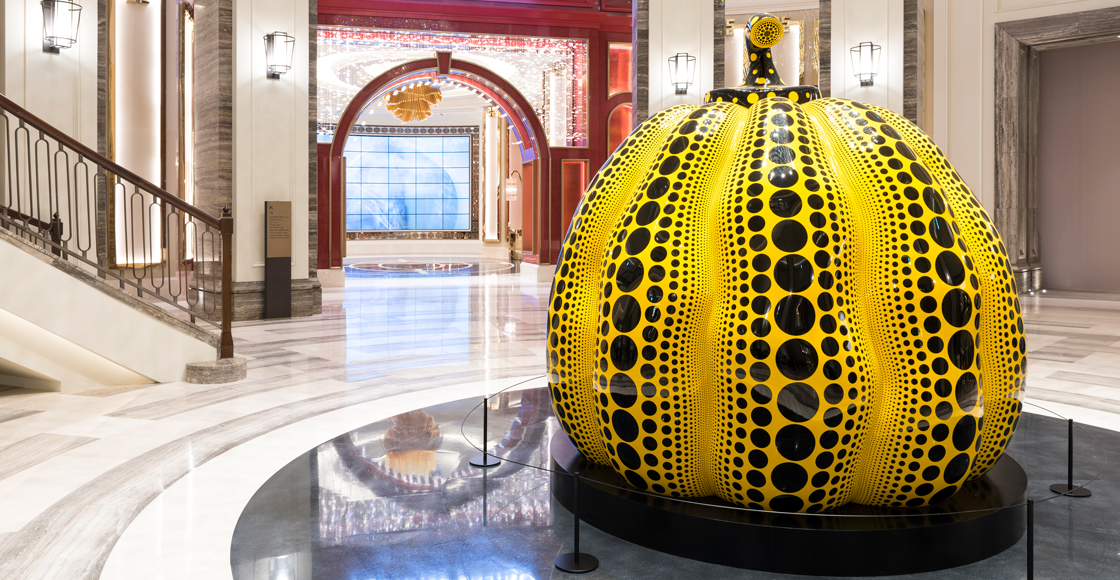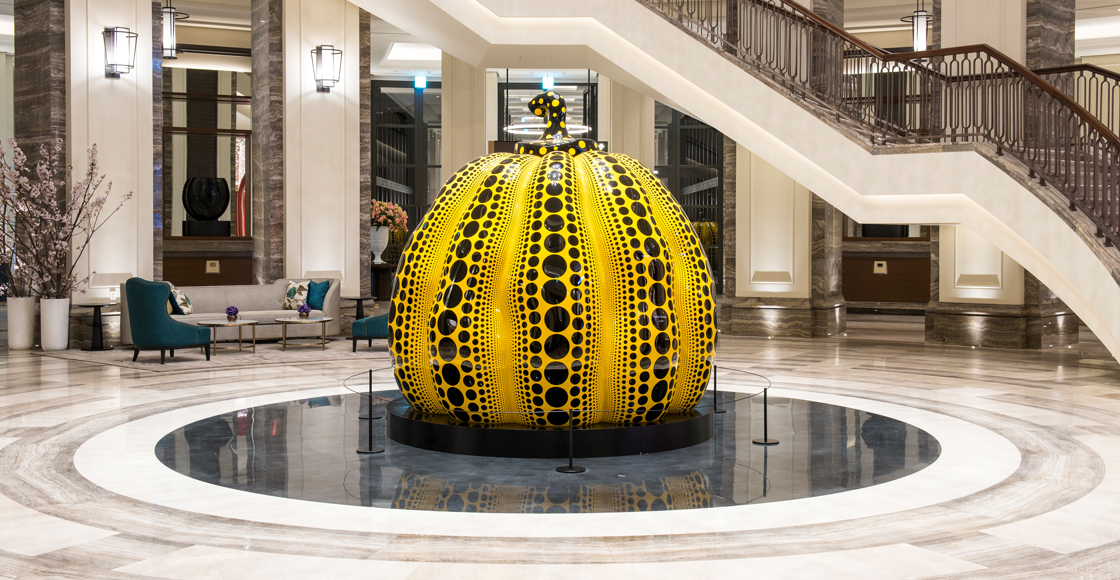ART COLLECTION
ARTWORKS INTRODUCTIONExperience a new level of art at the art-tainment resort PARADISE CITY.
Great Gigantic PumpkinYayoi Kusama
-
Park Seo Jun
Artwork Details
- name of artworkGreat Gigantic Pumpkin
- TypeSculpture and Installation Art
- LocationHOTEL PARADISE WOW SPACE
- ArtistYayoi Kusama
- Size260x260x250㎝
About the Artwork
Yayoi Kusama’s work employing a repetition, accumulation, proliferation and expansion of same factors or patterns has been a means to liberate herself from psychopathic paranoia and hallucinosis and enabled her to feel catharsis. Her pumpkins covered with polka dots are her major works first set in Naoshima in 1994 and later installed in various places. Although pumpkins have been conventionally symbolic of “ugliness,” to the artist it is “a medium to bring about poetic peace” with its “wild” and “humorous” magnetism.
About the Artist
Born in Nagano, Japan, Yayoi Kusama left Japan in 1957 and actively started her career in New York City. When she was ten years old, she began to experience vivid hallucinations in which every object in her surroundings included polka dots or dense fields of dots. The Infinite Nets series covered with the vast fields of polka dots was directly influenced by her hallucinations. Afterwards, this series was produced as sculptural works, crossing the border between object and canvas.
AUDIO GUIDE SCRIPT
Yayoi Kusama, a Japanese artist, created "Great Gigantic Pumpkin," a huge pumpkin covered in dot patterns. Yayoi Kusama used her art to overcome the trauma of her unfortunate childhood. Pumpkin in particular is a significant emblem for her that represents a peaceful spiritual home from her youth. (After singing the line of a children’s song that begins, “My pumpkin-like face, how ungainly it is."/optional). Why don't we explore the other charms of the pumpkin in a work that depicts a pumpkin, which used to stand for ugliness, in a bright yellow color and a familiar circle pattern?


